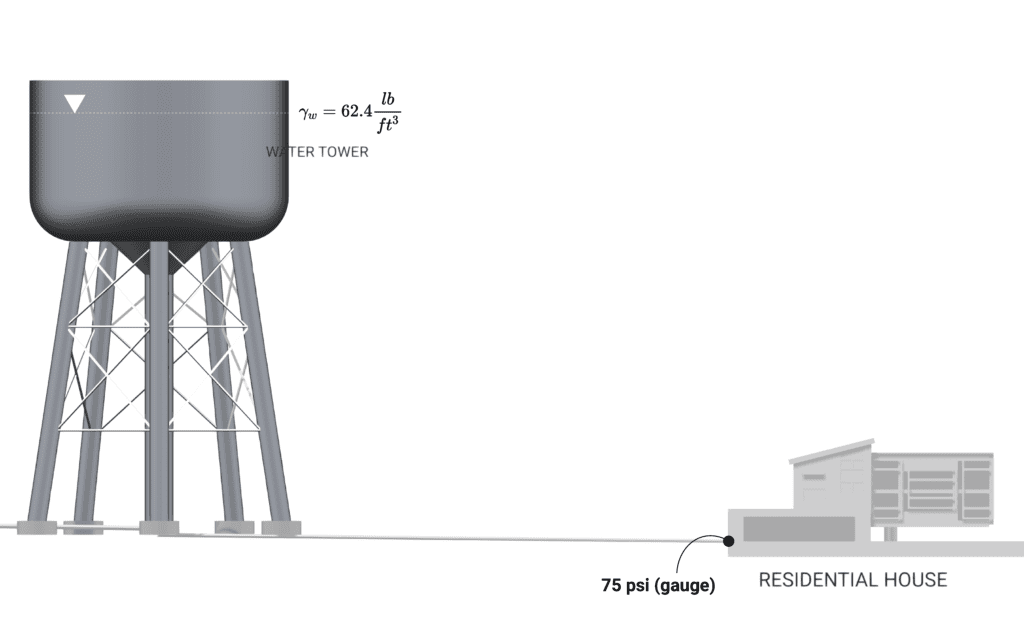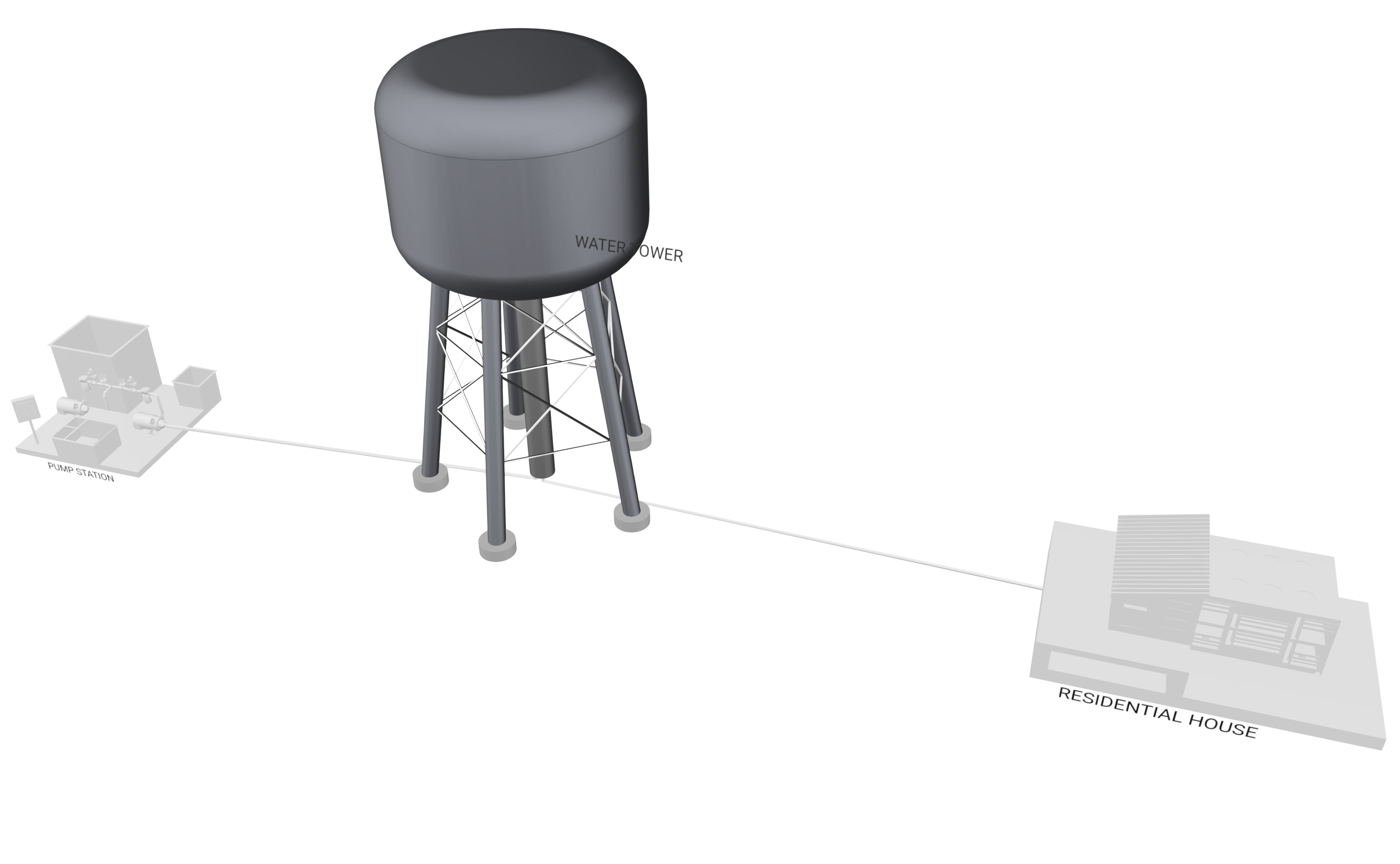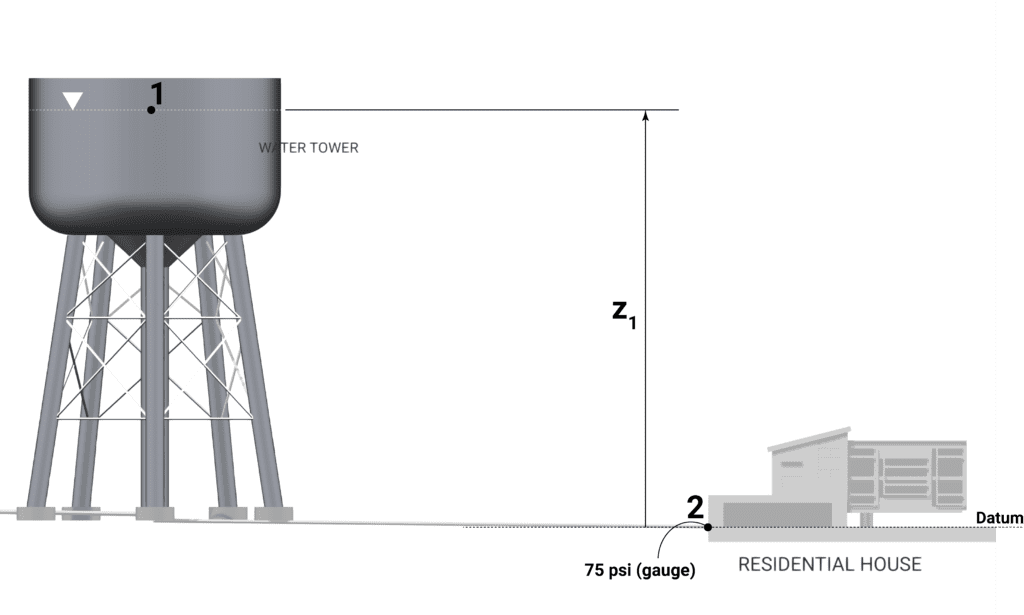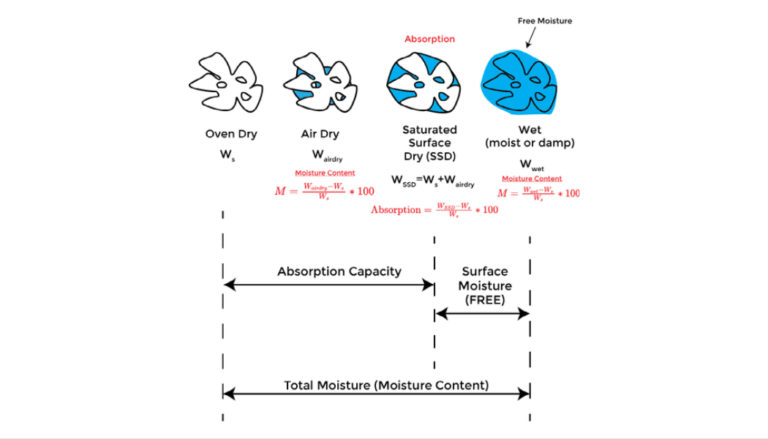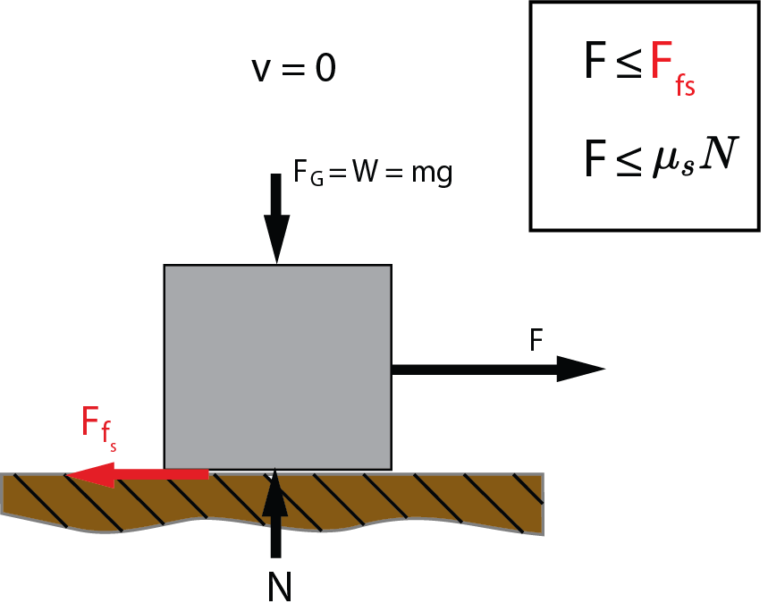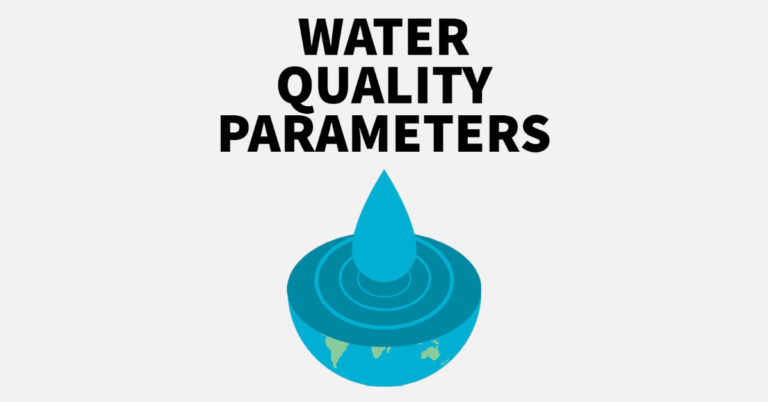FE Exam Concepts – Minimum height of a Water Tower
What is the purpose of a water tower? How tall must a water tower be? What is the pressure supplied by the water tower to the water supply system?
These are all classic (fundamental) FE type problems you should prepare for before taking your FE exam.
A water tower is an elevated structure supporting a water tank constructed at a height sufficient to pressurize a water supply system for the distribution of potable water, and to provide emergency storage for fire protection. Water towers are able to supply water even during power outages, because they rely on hydrostatic pressure produced by elevation of water (due to gravity) to push the water into domestic and industrial water distribution systems.
We can use the bernoulli equation to determine the required height of a water tower to satisfy the tap pressure residential requirements.
Worked Example using Bernoulli Equation
A residential house must have a water pressure of 75 psi (gauge). Neglecting all major and minor losses, the minimum height (ft) of the water tower should be:
